#canadian newspapers
Explore tagged Tumblr posts
Text
‘Hardened, Reckless Youths’: Constructing Criminals
The Free Press stated:
On Sunday many score of people visited Emily and Lisgar Streets, viewing Mrs Cooper’s house and locating the spot where the poor old man fell by the wayside, killed with stones thrown by hardened, reckless youths, whose moral sensibilities were dull through lack of home training and discipline, and who little thought of results. All the four parties now under arrest on the charge of complicity in the crime admit to have been drinking some during the evening but none of them were drunk – in their own opinion. It would be far better for them even though they could have had such a poor excuse as being drunk to offer for their lawless and murderous conduct’ (FP, 16 August).
Notions of criminality expounded ... by the press draw upon notions such as the fundamental animality and savagery of those who perpetrate crime, and the concept that criminals can be identified on the basis of their physical characteristics (see, e.g., Chevalier 1973, 409–33). Reportage on the four accused exemplifies how the newspaper used contemporary concepts of criminality as a descriptive frame. The Daily Citizen reported, ‘Christopher Berry lives in that part of the By estate known as Bully’s Acre, (so christened from the number of roughs who for years past have congregated there and committed all kinds of depredations)’ (15 August). Berry admitted to being at the charivari, and to having ‘had a glass on board,’ but claimed that he and Bob McLaren had been bystanders:
When O’Brien and Kelly were beating the old man with stones we went away and called them away also, and told them to let him alone … Kelly came up to us and said “by God, we have killed him,” and immediately O’Brien came up and says, “the old man was as dead as a nail,” at the same time laughing’ (ibid.).
Conversely, Kelly laid the blame on McLaren:
McLaren, who had stones in his possession, immediately began to treat the old man with them. We heard him moan and saw him fall down, and we knew he was dead. McLaren may tell what he likes, but that is God’s truth’ (ibid.).
When O’Brien was arrested, he was reported as saying, ‘“You may lecture me if you like, but it is not a neck-snapping affair”’ (ibid.). The Daily Citizen noted, ‘He is a hardened young character, and has only been out of jail a few days’ (ibid.). The arresting constable, Edward John O’Neill, testified that O’Brien had told him, ‘“McLaren and Berry are the lads that done it and now they want to put it on us.”’ Ruggles Bonell testified that he had seen Berry and McLaren at the charivari. He didn’t know the names of the other two men also present when he had left, but those at the Police Court were the ones he had seen at the charivari. He had attended both the first charivari, with the ‘little boys and men amongst them,’ and the second.
...
The papers note that Berry’s and Kelly’s mothers are widowed, and O’Brien’s mother is separated. The descriptions, however, point the direction of guilt as the papers see it. McLaren is good looking, comes from a good family, and speaks openly; therefore he cannot be guilty of murder. Berry, although ‘the authorities say he is a bad one,’ weeps, has never before been under arrest, and is willing to talk; therefore, although possibly implicated in the events, he is unlikely to be one of the murderers. Both Kelly and O’Brien, on the other hand, are constructed in the mode of guilt (both are Catholic, Berry is Church of England). Kelly is ‘passionate and revengeful’ and rough. O’Brien, however, again only on appearance, is constructed as the most guilty. Though from ‘honest people,’ he is cool, bloodthirsty, and goes out of his way to blame others (a kind of reverse evidence that he is himself guilty).
Character, appearance, family background, and employment were just some of the aspects used in the newspapers to direct their readers toward presumptions of guilt or innocence of the four accused. Their influence and success in this process is suggested by the fact that lawyers for the four men alluded to the press accounts in their addresses to the jury on behalf of their clients. Perhaps because it underlined their own influence, these interventions, too, were reported in the papers.
- Pauline Greenhill, Make the Night Hideous: Four English-Canadian Charivaris, 1881–1940. Toronto: University of Toronto Press, 2010. p. 59-60, 64-65.
#canadian history#charivari#wedding ceremony#trick or treat#regulation of marriage#canadian newspapers#newspaper coverage#primary sources#historical research#newspaper sources#academic research#reading 2024#make the night hideous#ottawa#manslaughter#stereotyping
0 notes
Text

"Aw, my muffin."
Webtoon | Insta | Bluesky
Support on Patreon!
#tiff and eve#comic strip#webcomic#newspaper comics#trans artist#cartoonist#quebec#Quebecois#muffins#languages#french canadian#original art#my art#illustration#art
547 notes
·
View notes
Text
Atlantic Canada's largest newspaper chain is now officially owned by Toronto-based Postmedia Network Inc.
On Monday, Postmedia confirmed the closing of its $1-million purchase of SaltWire Network Inc. and the Halifax Herald Ltd. in a short statement on its website. The sale was approved by a Nova Scotia Supreme Court judge on Aug. 8.
Andrew MacLeod, Postmedia's president and CEO, said his company is "delighted" to welcome the new media properties, saying the sale "preserves their vital role within the community."
Full article
Let's explore why this is a very bad thing.
Postmedia, the company that just bought a chain of over two dozen Atlantic canada newspapers, is known for many things- none of them good.
This is an incomplete list of harmful things that Postmedia and its executives have done/are known for:
Right-wing politics. "The National Post was founded in 1998 by Conrad Black, who has connections to conservative politics and sat as a Conservative Party member of the United Kingdom's House of Lords. The Post has always been aligned with the right side of the political spectrum. ..."Just in the past couple of years, Postmedia has issued an edict stating that they should move even farther to the right, so they're very reliably conservative," said [Media journalist Marc] Edge. "In fact, [they] endorse Conservative candidates often over the objections of their local editors.""
Union busting. "They employed a mix of cajoling (such as with buyouts and raises), entreaties to preserve the paper’s uniquely collegial newsroom culture, office-wide memos decrying the havoc a union would wreak, and, according to CWA Canada President Martin O’Hanlon, one-on-one meetings between staff and management."
Monopolization of canadian news media. "Postmedia Network’s purchase of Saltwire Network will extend its grip from coast to coast, as it already dominates Western Canada with eight of the nine largest dailies in the three westernmost provinces. This purchase will give Postmedia the largest dailies in Nova Scotia, Prince Edward Island and Newfoundland to go along with the largest in New Brunswick, which it acquired from the Irving Oil family two years ago."
Cuts to pensions and benefits while giving large bonuses to executives. "...several top Postmedia executives had received enormous retention bonuses at a time of aggressive belt-tightening (after which many left regardless), and second, the March 2017 announcement that benefits and pensions would be curtailed significantly."
Already beginning to lay off staff from the Atlantic canada newspapers they now own. "...the long-term future of workers in departments like circulation, advertising, customer service, finance and production remains uncertain. "Staff believe maintaining local jobs in the community is critical to retaining both subscribers and clients," the union said. Last week, the union representing workers at The Telegram confirmed that four of the paper's 13 newsroom positions will be eliminated."
More reading: source 1, source 2
Tagging: @allthecanadianpolitics
#mine#cdnpoli#postmedia#national post#media#news#news media#newspapers#conservatives#conservatism#atlantic canada#capitalism#monopolies#monopolization#canada#canadian news#canadian politics
140 notes
·
View notes
Text
About 30 per cent of newsroom jobs have been cut at a 145-year-old daily newspaper in St. John’s, N.L., following a takeover by Postmedia. Keith Gosse, head of the union representing workers at The Telegram, says staff learned Wednesday that four of the paper’s 13 newsroom positions will be eliminated. As well, Saturday will be the paper’s last daily print edition, as it is moving to a weekly print version beginning next week with daily news online. Gosse says there were more than 40 people working in the newsroom when he first started at The Telegram in 1986.
Continue Reading
Tagging: @newsfromstolenland
#newspaper#layoffs#unions#st johns#newfoundland and labrador#cdnpoli#canadian politics#canadian news#canada
91 notes
·
View notes
Photo

Jean-Paul Riopelle (Canadian, 1923-2002)
Printemps, 1952
© Estate of Jean Paul Riopelle / SOCAN (2022)
https://www.theartnewspaper.com/2023/jean-paul-riopelle
#jean paul riopelle#riopelle#canadian art#abstract expressionism#abstract art#art#abstract painting#mu art#mu#theartnewspaper.com#The Art Newspaper#art magazine#art site#xyz
33 notes
·
View notes
Text

Soldiers of the 2nd Battalion Scots Guards, 1914.
#1914#the great war#historical photos#the first world war#world war one#world war 1#wwi#history#canadian history#1917#1914 christmas truce#1914 1918#circa 1914#1910s#first world war#newspapers#1921#ww1#world war 1 stories
52 notes
·
View notes
Text
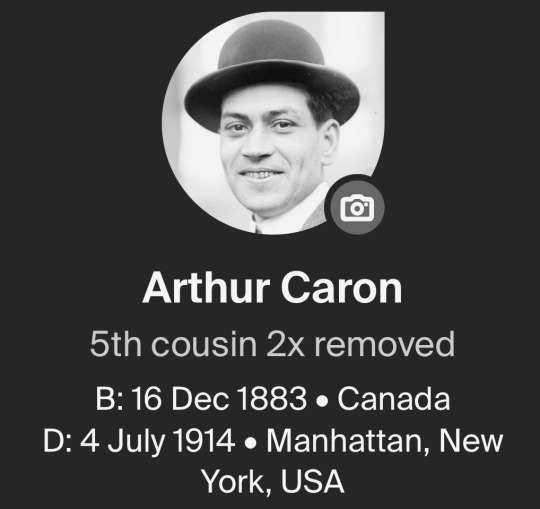

On July 4, 1914 - An explosion demolished the upper stories of an apartment building in East Harlem, killing anarchist Arthur Caron and several colleagues. Caron had been among those who protested the involvement of the Rockefeller family in April's "Ludlow Massacre." It appeared that Caron and his associates were building the bomb meant to kill John D. Rockefeller Jr., when it exploded.
(The Ludlow Massacre occurred April 20, 1914, when Colorado state troops and a private force hired by a Rockefeller-owned coal mining company attacked and destroyed a tent camp of striking miners and their families.)
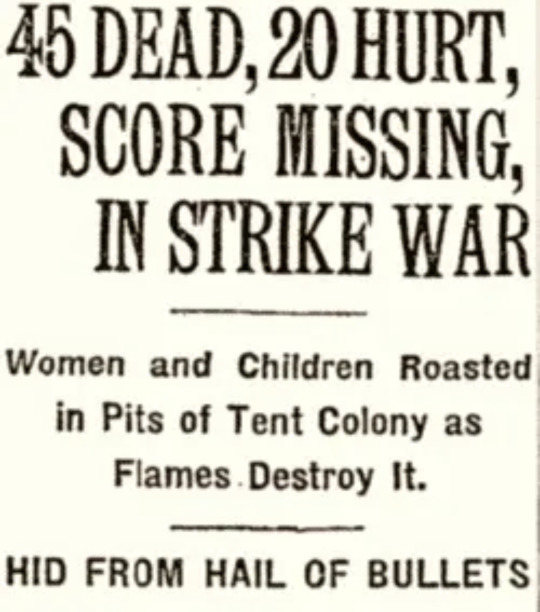
An official report stated that at least twenty-five people - including fourteen children and two women - perished in the massacre. Earlier reporting put the death toll at a minimum of forty-five people, with women and children accounting for thirty of those deaths.
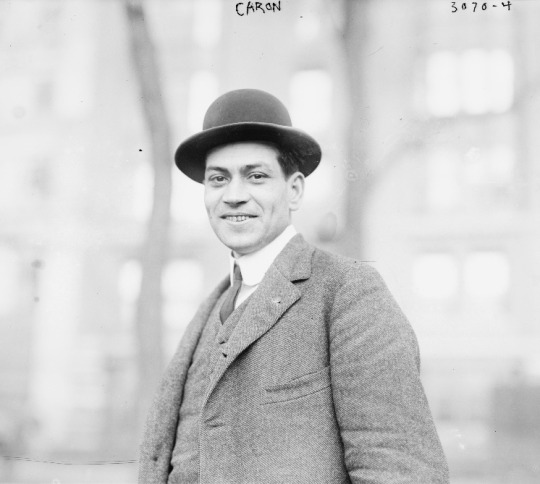

Left: Photograph shows French Canadian anarchist Arthur Caron, a member of the Industrial Workers of the World (IWW), who was killed in the Lexington Avenue bombing of July 4, 1914 in New York City.
Right: Photograph shows members of the Industrial Workers of the World (IWW), who were involved in the Lexington Avenue bombing of July 4, 1914, New York City. Group includes Arthur Caron and Charles Plunkett.
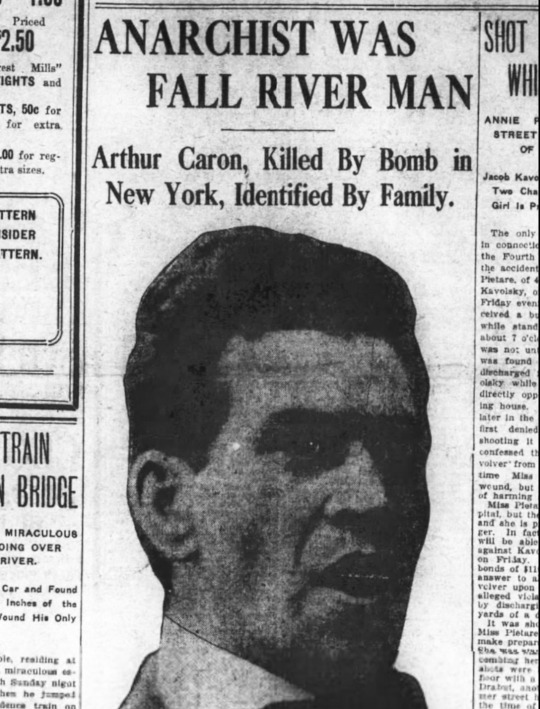
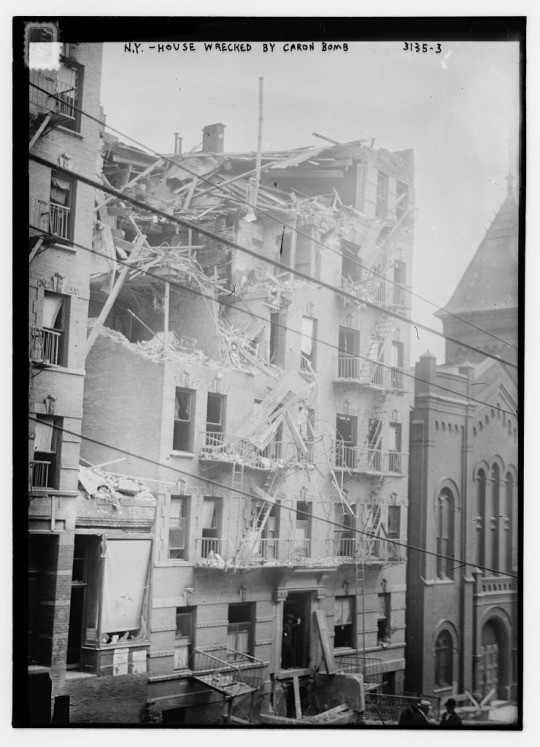
Photograph shows the destruction caused by a bomb at 1626 Lexington Avenue, New York City, which killed four people and injured many others. Anarchist conspirators were making the bomb which they intended to put at John D. Rockefeller's home in Tarrytown, New York.

Above: Baptism record of Joseph Arthur Caron, Beauport, Quebec, Canada, 1883. His father is recorded as a day laborer.
Below: Fall River, Massachusetts marriage record for Arthur Caron and Elmina Reeves, 3July, 1905.

Indexed New York death record information.
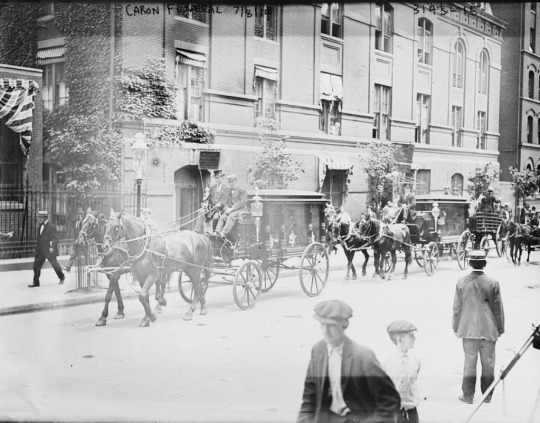
Funeral procession for French Canadian anarchist Arthur Caron, a member of the Industrial Workers of the World (IWW), who was killed in the Lexington Avenue bombing of July 4, 1914 in New York City.
More information:
#arthur caron#anarchist#french canadian#genealogy#family history#true crime#ancestry#anarchism#american politics#ancestors#crime history#family photos#genealogical#family#newspaper#john d. rockefeller#rockefeller#crime#bombing#politics#radical politics#progressive politics#canadian#fall river#new york city#new york#manhatten#anarchy
23 notes
·
View notes
Text

best headline from a weekend of crappy news
#florida man#us politics#national post is a Canadian national newspaper in the same vein as NY Times for your reference
4 notes
·
View notes
Text

Cavemen Roam the Rockies?
Winnipeg Free Press Magazine, August 24. 1940
#winnipeg manitoba#bigfoot#sasquatch#cryptids#north american cryptid#cryptozoology#cryptid#newspaper clippings#cavemen#canadian rockies
2 notes
·
View notes
Text
lol oh Toronto, once again being a shining star in international news
#it's funny what US newspapers take notice of in Canada#like important stuff up here? nothing. silence.#Our mayor doing crack or a car theft issue? Headlines#it's very funny and also telling about a few things considering how closely Canadian news outlets follow US politics#Canada#Toronto#Toronto the Good#lololololol#that epithet was never true and I love moments when it's really deeply ironic#blogto#is not a real news source in that it's deeply unserious#but they're a great lunchtime read
8 notes
·
View notes
Text
"To a large extent, then, this chapter is about the charivari as a news story, and I follow the leads its discourse suggests, particularly about leisure activities and drink. .... As a foundational history of Canadian journalism put it, in nineteenth-century newspapers
local events were not … reported in the objective fashion of the modern news story. Even accounts of fires, drownings, and other disasters were heavily interlarded with opinion and comment’ (Kesterton 1967, 15).
An 1894 comment from businessperson and writer J. Macdonald Oxley echoed the newspapers’ own hyperbole:
[The newspaper] reaches a wider audience than the pulpit; it uses more effective arguments than the platform; it smites harder and more enduring blows than the sword’ (qtd in Rutherford 1982, 4).
While some might question the actual objectivity of current news reportage, the distanced style now employed by daily newspapers – though not necessarily by local community newspapers (see Greenhill 1989a) – is absent from these accounts of the charivari. Historian Paul Rutherford argues
Popular journalism was committed to accuracy, getting all the facts right, but not to the ideal of objectivity. Editors had few scruples about slanting the news to favour some particular point of view or provoke some kind of response’ (1982, 139).
This partisanship was as true of the news reporting as of the editorial content per se. Media social effects included ‘agenda-setting (ordering the priority of issues or values in the public domain), mobilization (calling the people to arms), stereotyping (fixing images of particular ideas, events, or occupations), conferring of status (the creation of heroes and villains), manipulation of mood (emphasizing some collective emotion … ), and socialization (the education of people in the “proper” ways of thinking and behaving)’ (ibid., 7–8). ...
The format in which most of the charivari reports are found is what Rutherford calls ‘the story,’ which ‘strove to reach the reader’s “heart” as well as “mind,” indeed to involve the reader in whatever joyful or tragic item the newspaper was serving up’ (ibid., 142). If moral lessons could be drawn from stories about events resulting from accidents and forces of nature, like fires and drownings, the charivari – as a complex, already impassioned, and deliberate interaction between humans – formed a particularly rich subject. The moral lessons indicated in the papers are on the evils of drink, but they are also about how young men spend (and misspend) their time. Further, ‘the nineteenth-century editor was guilty of circumlocutions, discursiveness and occasionally, pretentiousness’ (Kesterton 1967, 18) – qualities amply present in the examples that follow.
Yet clearly ‘the popular newspaper … can exercise a great deal of ideological power’ (Rutherford 1982, 8). Specifically,
the big-city daily empowered the forces of progress in the modernizing community … [T]he very bias of popular journalism, its emphasis on mass literacy, made newspapers leading antagonists of the force of custom which buttressed old ways’ (ibid.).
The values newspapers created and maintained focused on notions of modernity, a ‘dogma … built upon apparent certitudes … The idea of progress was the most hallowed maxim of the age’ (ibid., 156–7). In such a world, the charivari was a throwback, a relic, an outdated practice, and – in the Wetherill case – a grim reminder that progress had been neither uniform nor complete.
Rutherford argues that at the middle of the nineteenth century
the publisher or editor could indulge his own idiosyncrasies. What news to feature, which causes should be served, whether or not to entertain readers were the prerogatives of the journalist’ (ibid., 118).
He suggests that the contents were thus variable from newspaper to newspaper. And yet, the coverage of the Wetherill charivari in the [Ottawa] Daily Citizen and the [Ottawa] Free Press is notable less for its differences than for its similarities.
An alternative view suggests that journalism may work within two sometimes congruent, sometime contradictory models – that of information and conversation. Their purpose, then, was not simply to report what was going on, but to stimulate public and community debate on the issues at hand (see, e.g., Nord 2001). Evidently, the newspapers were an integral part of the contemporary discourse on the charivari. Interactions between oral testimonies and local talk, on the one hand, and reportage, on the other, appear periodically in both newspaper and legal discourse. Their contents suggest a mutual productiveness between the oral texts and the written newspaper accounts. Of course, the translation of traditional practice and oral testimony to written form often includes semantic as well as structural alteration of content.
...
The newspapers’ influence is constructed here in terms of inaccurate representation of the charivari, self-serving rather than responsible reportage, inappropriate judgment of legalities (and illegalities), and duplicitous and/or inconsistent representation. A reader of today might find much to agree with in these criticisms. Indeed, it is frequently difficult to separate the reports’ rhetorical flourishes from coverage of the actual events. Where there is substantial agreement in content between the two papers, I assume some accuracy in the reporting. Yet the discursive form strongly influences the information provided."
- Pauline Greenhill, Make the Night Hideous: Four English-Canadian Charivaris, 1881–1940. Toronto: University of Toronto Press, 2010. p. 37-40.
[A great discussion of the use of newspapers for historical research - useful to remember and quote for my own writing.]
#canadian history#charivari#wedding ceremony#trick or treat#regulation of marriage#canadian newspapers#newspaper coverage#primary sources#historical research#newspaper sources#academic research#reading 2024#make the night hideous#ottawa#my writing
0 notes
Text
i dont know where this person is citing this info that the first starbucks in edmonton opened in 2003 from but i had to be the most annoying person on earth and comment on the document Ummm Actually sorry sweaty i was at starbucks in edmonton in 1997 : )
#and i do have a newspaper source for that too#but I Was There Gandalf#hapo reads queer history#hapo reads canadian history#i was not in the country in 2003 but i had been to starbucks i assure you
4 notes
·
View notes
Text
(topic that literally only interests me alert) have we spoken about whatever the fuck it is that Sandeep Singh is doing with his career. Starts as an entertainment journalist and then does reality dance -- far enough, get that bag and get into the industry, do what you gotta do. Then he gets into Bhansali (A.P. on GKR Ram Leela which IS a fake job but I love Ram Leela so we'll give him credit for it) and uses it to make Aligarh, one of the earlier films about gay men in India at a time when it was fully illegal and which was fairly good actually!! …and then he makes fucking. PM Narendra Modi. Imagine going from Aligarh to bootlicking that badly.
And then follows it up with his directorial debut on Safed, which was so hammy and badly acted that I can't recommend anyone watches but is again a fairly risky film in that it's talking about how terribly widows and hijras are treated and which I have to shout out because it features some bangers on the soundtrack (Rang Rasiya -- finally, some good fucking Sufi. and the fusion on Gila Karna!). And he looks like this which SCREAMS fuckboy with more money than brains.

Anyways. Is he talented? Is he a Hindutva bootlicker?? Who knows! Not me!!!
#bollywood#kin & the void#anyways sandeep singh let me interview you for a canadian college newspaper i ask better questions than times of india
0 notes
Text

Not a bad headline for Canada when you blow through your 40 billion deficit by nearly 22 billion, two of your cabinet members resign, and all hell breaks loose in Ottawa.
0 notes
Text

There's a video on Youtube called "Headless Valley (Mel and Ethel Ross, 1958)" in which the Nahanni is thee filming location, and in that video, you can see these and other newspaper clippings. These clippings mention some of the strange things that happened in the valley over the years or even that some people thought the Headless Valley didn't exist at all.
To hear us talk about the myths, legends, supernatural occurrences, and true crime that happened in the Nahanni Valley, tune in to this week's episode! I'll link out resource page below where you can find the resources for this episode and a link to listen directly on the website, or you can listen wherever you get your podcasts.
The Beautiful & Headless
#We love old newspapers over here#true crime#historic true crime is terribly fascinating#wwyat#podcast#history#canadian history#national park#nahanni national park
0 notes
Note
hi from alberta
hi hows it all going
0 notes